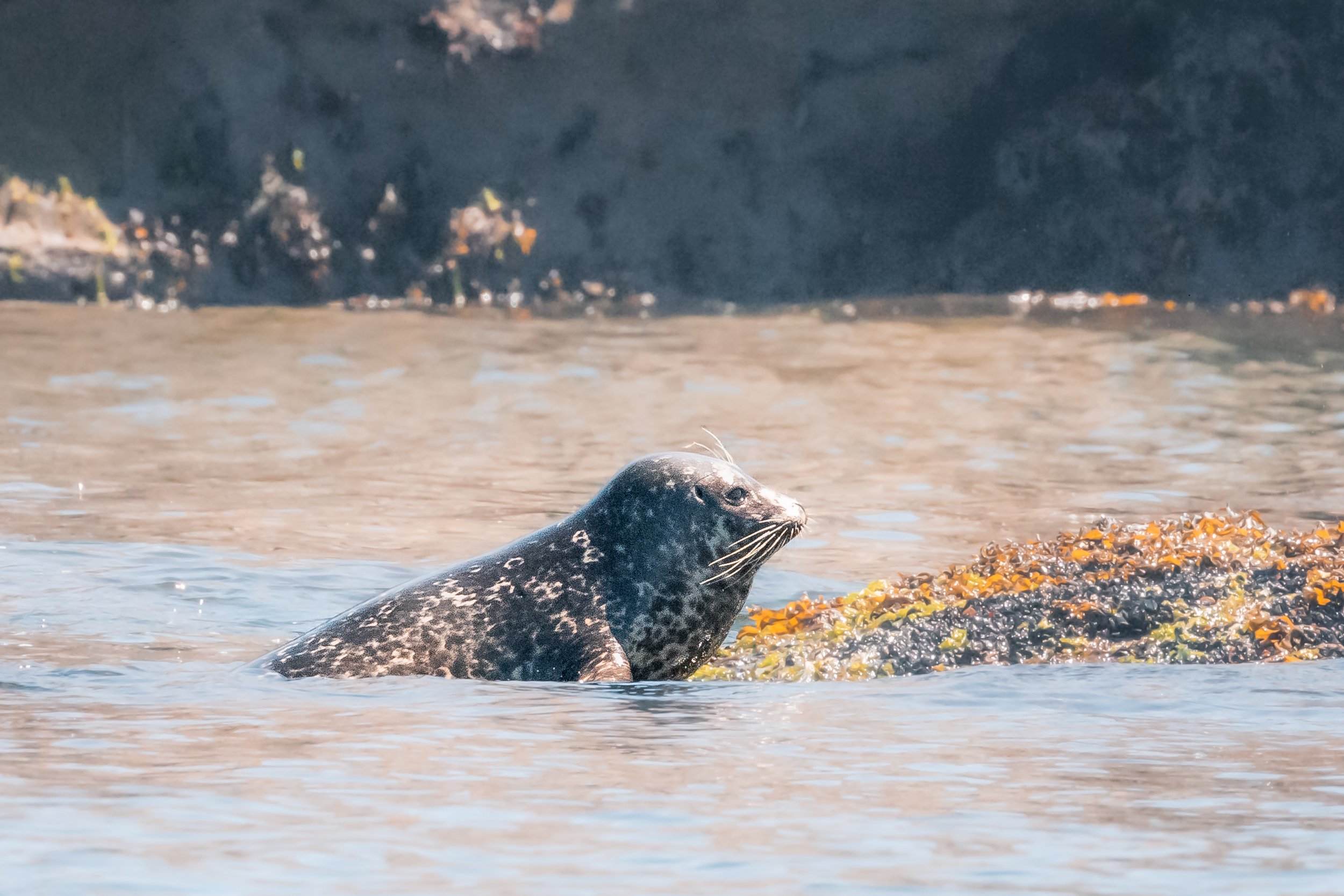July 11th - A Snoopy morning and a Zigzag filled afternoon
Today we had 2 boats out in the morning and one boat out in the afternoon. Both tours were lucky to see humpback whales in the Salish Sea.
Our morning tour got see Snoopy (BCY0770), a male humpback that migrates between Hawaii and the Strait of Georgia, while our afternoon tour saw Zig Zag (BCX1193), a female humpback whale whom also migrates between Hawaii and the Strait of Georgia. Zig Zag, also known as Trinity, has given birth to two known calves, Scuba born in 2019 and Schooner born last year (2021).
Not much is known about Humpback whales social habits because the majority of humpbacks were wiped out during the extensive whaling era that took place throughout the 1800 and 1900’s. It was once thought that there were up to 120,000 humpbacks in each of the populations around the world. By the time the International Whaling Commission banned the hunting of humpback in 1966 the global population had been reduced to roughly 5000 animals, the North Atlantic population alone was reduced to roughly 700 individuals.
Thanks to this ban the humpback populations around the world have been steadily recovering. It’s now estimated that the global population is around 135,000 whales (as of 2018) The North Atlantic population has rebounded from the 700 individuals to around 13,000 whales now.
Our Salish Sea humpbacks have a very similar story. In the early 1900’s humpbacks of the Salish Sea vanished. Forced out by the increasing hunting activity the whales fled and were not confirmed in the region for nearly 100 years. Humpbacks still migrated through the East Pacific but likely traveled to Alaska and the Aleutian islands in the summers. Humpbacks get one short year with their mothers, during which they memorize the migration route and learn how to forage at the feeding grounds. In 1997 a single humpback was recorded in the San Juan Islands in the southern part of the Salish Sea. Since then humpback sightings have sky rocketed. In a little over 20 years the Salish Sea humpback population has gone from 0 to over 500 individuals that pass through out waters, with nearly 30,000 sightings coming from the coasts of Washington and BC.
Currently it’s estimated that the Eastern North Pacific population sits around 22,000 individuals. It’s a far cry from the possible 120,000 that could have once inhabited our ocean, but it’s a good sign these magnificent animals are recovering and we hope to watch them thriving on our coast for many years to come.
While traveling through our water we move past many islands, many of which are sanctuaries for various plants and animals. Many birds will either migrate here and use the islands as nesting and breeding sites, while other birds will use the islands as resting stops on their migration north to Alaska and/or the Yukon.
Snoopy (BCY0770) showing bite marks from Cookie cutter sharks (Yes, that’s a real thing). Photo by Janine Van Der Linden.
Snoopy (BCY0770). Photo by Janine Van Der Linden.
Talk about a distinct fluke! Snoopy (BCY0770). Photo by Janine Van Der Linden.
Bump-city. Snoopy (BCY0770). Photo by Janine Van Der Linden.
Snoopy (BCY0770). Photo by Janine Van Der Linden.
Snoopy (BCY0770). Photo by Janine Van Der Linden.
Snoopy (BCY0770). Photo by Janine Van Der Linden.
Snoopy (BCY0770). Photo by Janine Van Der Linden.
Snoopy (BCY0770). Photo by Janine Van Der Linden.
Zig Zag (BCX1193). Photo by Janine Van Der Linden.
Zig Zag (BCX1193). Photo by Janine Van Der Linden.
Zig Zag (BCX1193). Photo by Janine Van Der Linden.
Zig Zag (BCX1193). Photo by Janine Van Der Linden.
Zig Zag (BCX1193). Photo by Janine Van Der Linden.
Harbour Porpoise. Photo by Janine Van Der Linden.
A baby harbour seal. Photo by Janine Van Der Linden.
Black Oystercatcher preening. Photo by Janine Van Der Linden.
Can you spot the Black Turnstone in this photo? Photo by Janine Van Der Linden.
Nest squabbling. Photo by Janine Van Der Linden.
One of these is not like the others. Photo by Janine Van Der Linden.
Pigeon Guillemots showing off their impressive red feet. Photo by Janine Van Der Linden.
Photo by Janine Van Der Linden.
Make sure to get my good side! Photo by Janine Van Der Linden.
Photo by Vanessa Vereschahen.
Photo by Vanessa Vereschahen.
Photo by Janine Van Der Linden.
Photo by Janine Van Der Linden.
Photo by Janine Van Der Linden.
Photo by Janine Van Der Linden.
Photo by Janine Van Der Linden.
Photo by Janine Van Der Linden.
Photo by Janine Van Der Linden.
Can you see this master of disguise? Photo by Janine Van Der Linden.
Snack time! Photo by Janine Van Der Linden.


































